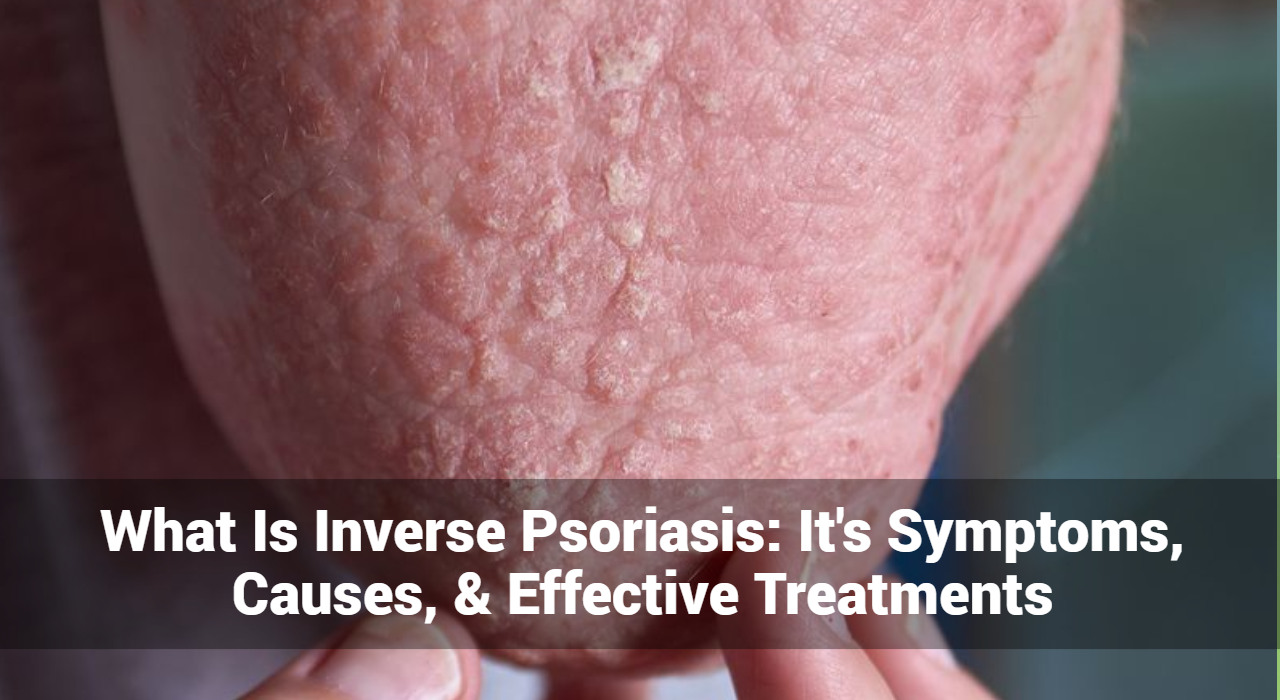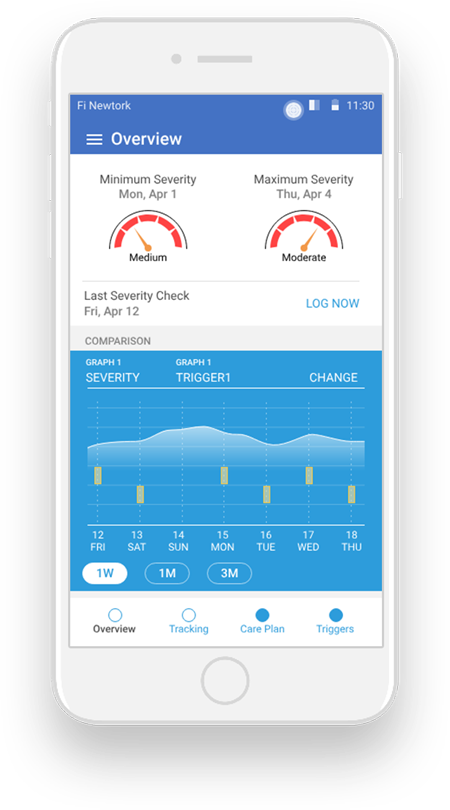What Is Inverse Psoriasis: It’s Symptoms, Causes, & Effective Treatments

Inverse psoriasis is a lesser-known form of psoriasis that manifests in skin folds and creases, often presenting unique challenges in diagnosis and management. In this comprehensive guide, we’ll delve into the symptoms, causes, and treatment options for inverse psoriasis, offering valuable insights for individuals grappling with this condition.
What is Inverse Psoriasis?
Inverse psoriasis, also known as intertriginous psoriasis, is a subtype of psoriasis characterized by smooth, red, inflamed patches of skin that occur in the skin folds and creases of the body. Unlike other forms of psoriasis, such as plaque psoriasis which typically appears on the elbows, knees, and scalp, inverse psoriasis tends to affect areas like the armpits, groin, under the breasts, and around the genitals.
How Do Symptoms Of Inverse Psoriasis Impact Daily Activities And Quality Of Life?
Symptoms of inverse psoriasis often manifest as:
- Smooth, Red Patches: Inverse psoriasis typically presents as smooth, red patches of inflamed skin. Unlike the raised, scaly patches commonly seen in other forms of psoriasis, the lesions in inverse psoriasis are often flat and may have a shiny appearance.
- Skin Folds and Creases: Affected areas tend to occur in skin folds and creases, such as the armpits, groin, under the breasts, and around the genitals. These regions provide an ideal environment for the development of inverse psoriasis due to increased friction and moisture.
- Itching and Discomfort: Individuals with inverse psoriasis may experience itching, burning, or soreness in the affected areas. Discomfort can be exacerbated by friction from clothing or physical activity.
- Moist Appearance: Due to the moisture buildup in skin folds, areas affected by inverse psoriasis may appear moist or shiny. This moisture can further contribute to skin irritation and discomfort.
- Susceptibility to Fungal Infections: The warm, moist environment of skin folds makes them susceptible to fungal infections. Individuals with inverse psoriasis may be more prone to developing secondary fungal infections, such as candidiasis, in affected areas.
- Aggravation by Sweating: Sweat can exacerbate symptoms of inverse psoriasis, leading to increased itching and discomfort. Managing sweating through proper hygiene and avoiding tight clothing can help alleviate symptoms.
It’s important to note that symptoms of inverse psoriasis can vary from person to person and may fluctuate in severity over time. If you suspect you may have inverse psoriasis or are experiencing persistent skin symptoms, it’s advisable to consult a dermatologist or healthcare professional for accurate diagnosis and personalized treatment recommendations.
Track and Manage your Eczema treatment using a comprehensive Eczema App
Download Eczemaless now
What Are The Causes Of Inverse Psoriasis?
Inverse psoriasis, like other forms of psoriasis, is a complex skin conditions with multiple factors contributing to its onset. Here’s an exploration of the causes of inverse psoriasis:
- Genetic Predisposition: Genetic factors play a significant role in predisposing individuals to inverse psoriasis. Research suggests that certain genetic variations increase susceptibility to psoriasis, including inverse psoriasis.
- Immune System Dysfunction: Inverse psoriasis is considered an autoimmune disorder, where the immune system mistakenly targets healthy skin cells, leading to inflammation and accelerated skin cell growth. This immune system dysfunction is a key driver of psoriasis, including its inverse form.
- Environmental Triggers: External factors such as stress, infections (e.g., streptococcal infections), injury to the skin, or certain medications can trigger flare-ups or worsen existing inverse psoriasis. Environmental triggers vary among individuals and can play a significant role in the onset and severity of the condition.
- Obesity and Skin Folds: Obesity is associated with an increased risk of developing psoriasis, including inverse psoriasis. Excess weight can lead to friction and sweating in skin folds, creating an ideal environment for psoriatic lesions to develop and worsen. The interaction between obesity and psoriasis is complex and may involve inflammation and metabolic factors.
- Hormonal Factors: Hormonal changes, such as those occurring during puberty, pregnancy, or menopause, can influence the onset or severity of psoriasis, including inverse psoriasis. Fluctuations in hormone levels may affect immune function and inflammatory responses, potentially exacerbating psoriatic symptoms.
- Lifestyle Factors: Factors such as smoking, excessive alcohol consumption, poor diet, and sedentary behavior can contribute to inflammation and immune dysregulation, potentially worsening psoriasis symptoms, including those of the inverse form.
- Psychological Factors: Stress, anxiety, and depression can exacerbate psoriasis symptoms through the release of stress hormones and modulation of immune responses. Managing stress and maintaining good mental health can be crucial in managing inverse psoriasis effectively.
Understanding these various causes of inverse psoriasis can help individuals and healthcare professionals develop comprehensive management strategies tailored to each individual’s unique needs.
Diagnosis of Inverse Psoriasis
Diagnosing inverse psoriasis typically involves a thorough examination of the affected skin by a dermatologist or healthcare professional. Since inverse psoriasis can resemble other skin conditions such as fungal infections or intertrigo, a skin biopsy may be performed to confirm the diagnosis and rule out other potential causes.
GET IN CONTROL OF YOUR ECZEMA
Use our AI tool to check the severity of Eczema and keep track of your Eczema progress.
What Are The Treatment Options for Inverse Psoriasis?
Treatment for inverse psoriasis aims to reduce inflammation, alleviate symptoms, and prevent flare-ups. Common treatment options include:
Lifestyle and Home Remedies For Inverse Psoriasis
In addition to medical treatments, certain lifestyle modifications and home remedies may help manage inverse psoriasis symptoms, including:
- Maintaining Skin Hygiene: Keeping the affected areas clean and dry can help prevent bacterial and fungal infections, which can exacerbate inverse psoriasis.
- Avoiding Irritants: Avoiding harsh soaps, perfumes, and other potential irritants can help minimize skin irritation and inflammation.
- Moisturizing: Regularly moisturizing the skin can help alleviate dryness and reduce itching associated with inverse psoriasis.
- Stress Management: Managing stress through relaxation techniques, meditation, or therapy can help reduce flare-ups of inverse psoriasis, as stress is known to exacerbate symptoms.
Conclusion:
Inverse psoriasis can pose significant challenges for individuals due to its location in skin folds and creases, but with proper diagnosis and treatment, symptoms can be effectively managed. By understanding the symptoms, causes, and treatment options for inverse psoriasis, individuals can take proactive steps towards achieving healthier skin and improved quality of life.
In conclusion, inverse psoriasis is a chronic skin condition that requires ongoing management, but with the right approach, individuals can find relief from symptoms and lead fulfilling lives. If you suspect you may have inverse psoriasis or are experiencing persistent skin symptoms, consult a dermatologist or healthcare professional for personalized evaluation and treatment recommendations.
Track and Manage your Eczema treatment using a comprehensive Eczema App
Download Eczemaless now



